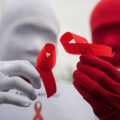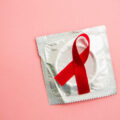Infection and the “window period” of HIV infection. Methods of HIV infection and basic measures to prevent HIV infection
Everything about the methods of transmission of HIV infection
Anyone can become infected with the immunodeficiency virus HIV is transmitted through direct transmission from an infected person to an uninfected person through bodily fluids such as blood, semen and other genital secretions, or breast milk. The main route of HIV infection worldwide is through sexual contact with an infected person. HIV often spreads among injecting drug users who share needles or syringes.
Before the development of screening procedures and heat treatment methods that eliminate HIV in blood products, infection also occurred through contaminated blood products. So, many people with hemophilia became infected in this way. Today, the risk of contracting HIV from a blood transfusion is extremely low. In rare cases, health care workers are at risk of infection from an accidental stick from a needle used to draw blood from an HIV-infected person.
The virus can be transmitted through the placenta during pregnancy or through breast milk from mother to baby. Giving antiretroviral drugs to both mother and baby at the time of birth reduces the chance of the baby becoming infected with HIV. Antiretroviral therapy can reduce the risk of transmission from infected individuals to their uninfected sexual partners by about 96 percent when started immediately after diagnosis.
Moreover, if infected individuals adhere to antiretroviral therapy for a long time, their HIV viral load may eventually become undetectable, meaning that the virus cannot be transmitted sexually; this phenomenon is called “undetectable = non-communicable” (U = N).
Theoretically possible ways of contracting HIV, but usually extremely rare, are:
- oral sex (only if you have bleeding gums or open mouth sores);
- bite of a person infected with HIV (only if the saliva is bleeding or there are open wounds in the mouth);
- contact of damaged skin with wounds, mucous membranes or blood of a person living with HIV.
HIV is not transmitted by coughing, sneezing, or casual contact (such as shaking hands). HIV is fragile and cannot survive outside the body for long. Transmission therefore requires direct transfer of bodily fluids. Other sexually transmitted diseases, such as syphilis, genital herpes, gonorrhea and chlamydia, increase the risk of contracting HIV through sexual contact, possibly through the genital lesions they cause.
Infection with the human immunodeficiency virus is not possible through:
- skin to skin contact;
- hugs, handshakes or kisses;
- by airborne droplets;
- sharing food or drinks with an HIV-infected person;
- saliva, tears or sweat;
- shared toilet, towels or bed linen;
- mosquito or other insect bites.
It is important to note that if a person with HIV receives ongoing treatment, the likelihood of transmitting the virus to another person is significantly reduced.
Duration of the “window period” for HIV infection
As soon as a person becomes infected with HIV, the virus immediately begins to multiply in his body. The human immune system responds to antigens (virus) by producing antibodies (cells that fight the virus).
The time between HIV entering the human body and the moment it is detected in the blood is called the HIV “window period.” For most people, the window period for HIV infection is 23-90 days after infection.
When a person is tested for HIV during the window period, the test will most likely be negative. However, already during this period, an HIV-infected person can infect other people. That is why, if you suspect a possible HIV infection, but the test shows a negative result during the “window period,” it is strongly recommended that you take repeated HIV tests after a few months. It is also necessary to use condoms during this time in order to prevent possible infection of the partner with HIV.
Post-exposure and pre-exposure prophylaxis of HIV infection
HIV post-exposure prophylaxis (or PEP) means taking antiretroviral drugs (ARVs) as soon as possible after exposure is identified to prevent a person from becoming infected with HIV. These drugs are available by prescription only. PEP should be started as soon as possible after the risk of infection is confirmed, but no later than 72 hours. If ARV treatment is well tolerated, it should be continued for 4 weeks, taking 2 or 3 drugs.
Another way to prevent infection is HIV pre-exposure prophylaxis PrEP is a combination of HIV medications taken before potential exposure to HIV.
When used consistently, they may reduce the risk of getting or spreading HIV.
Of course, PrEP does not provide 100% protection against HIV. There have been many studies that have shown that people who took PrEP were about 90 times less likely to become infected with HIV than people in comparison groups who did not receive the drug or took a sugar pill, sometimes called a placebo. This is a high figure, but not 100%. You can still get HIV, especially if you don't take the drug every day or if you got a resistant (resistant) strain of the virus from someone else.




